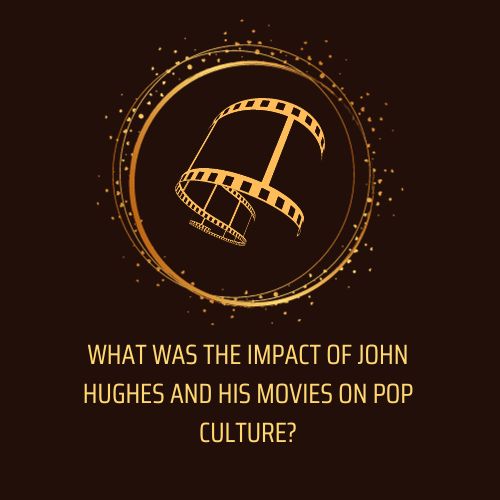John Hughes is widely known as the maker of several films during the 1980s and 1990s. In a way, he helped to breathe new life into the genre of comedy live-action movies. Along with this, he is also responsible for the string of high school-based movies during the 1980s. While he started out as a writer of National Lampoon stories and articles, he soon became a great success in the film industry.
Of his movies, the most recognizable names are probably Home Alone (1990), and Home Alone 2: Lost in New York (1992). While the second sequel ‘Home Alone 3’ (1997) was also produced under him, it wasn’t a smashing success like the first two. Other well-known works of John Hughes include Pretty in Pink ‘(1986), Sixteen Candles (1984), The Breakfast Club (1985), National Lampoon’s Vacation (1983), and Ferris Bueller’s Day Off (1986). Most of his works are set in the metropolitan area of Chicago. His teen comedy coming-of-age film usually included magic realism along with realistic showings of American teenage life in the suburbs. Most of the teen school-based movies starred Molly Ringwald, who is usually reported to be John Hughes’ muse. However, he also helped to launch several other actors and actresses, including Macaulay Culkin, and Michael Keaton.
The impact of John Hughes and his movies on pop culture is hard to ignore, especially when his works have been watched and enjoyed by many generations. Let’s have a look at how his work has shaped modern pop culture and do check out some tips on how to provide the best customer experience as well.
Amplifying Teens’ Voices
During the 1980s, teen voices were becoming more important in shaping pop culture overall. The films that John Hughes worked on, either as a producer or director, helped to make these voices more heard. In fact, Molly Ringwald later wrote that before Hughes’ films, while being a bit uncomfortable in retrospect, was showing high school life from the POV of a female. This hadn’t been done in the American movie industry until that point. At least two of the most successful Hughes’ school films had a female protagonist as the lead, examining their feelings about everyday things.
Creating Recognizable Characters
In many ways, Hughes was responsible for creating characters that are still enduring and very much a part of pop culture today as well as being among the highlights of pop culture in the 1980s. He gave us the teenage angst of a girl whose parents didn’t wish her a happy birthday. He also helped to create the mischievous near-genius kid in Home Alone, who introduced a new type of Christmas feeling to the whole world. Many of these characters have been copied, spoofed, and used in memes, skits, and several other stories. Even if an avid movie watcher in the 80s and 90s didn’t know the name of John Hughes, they would know the names of his characters Samantha Baker and Kevin McAllister. The movies Hughes gave us are also among the top 1980s films that people still talk about today;
Overall, the films from John Hughes were instrumental in focusing attention on several subcultures as well as shaping mainstream pop culture itself. He showed how teenagers can be portrayed with multiple complex layers instead of a one-sided bratty personality. He also showed how they can be very self-aware and outspoken. For perhaps the first time on the big screen, a young female was in the lead role and showcasing the various complexities of teenagerhood.
The Brat Pack and Communication Issues
In addition to Molly Ringwald, there were a few other actors/characters that Hughes brought together to change the way the world viewed teens on screen. Along with Anthony Michael, the cast members of The Breakfast Club became what we now call The Brat Pack. This was the group of teenagers whose portrayal showed viewers how teenagers were feeling and how they relate to each other.
Eventually, the main lesson of the legendary movie ‘The Breakfast Club’ showed viewers how communication can help to resolve a lot of issues and misconceptions. The movie shows a motley group of students in high school, all called into early morning detention on a Saturday. They all come from different socioeconomic backgrounds and also belong to various cliques that don’t usually interact with each other. Since social status is very important in the teenage experience, their company also defines their hierarchy in high school. With this common knowledge, The Breakfast Club flipped this view on its head.
First of all, The Breakfast Club was filmed in one room for the most part. This forced the viewer to closely view each of the five students, not missing any detail in the storyline. Then, we get individual introductions and get to know their backstories at a glance. As the film goes on, however, the group learns how to have fun together, shed their preconceived mindsets about each other, and also challenge the current politics in their high school.
At the end of the film, the audience sees a new side of each character, including their main challenges in life. The characters also became good friends with each other, including at least one budding romantic relationship.
‘Pretty in Pink’ and Social Class Issues
Pretty in Pink was the last film Hughes did with Molly Ringwald. It introduced the complexities of social class issues and how they were viewed through the eyes of a teenager. This continued the tradition of Hughes paving the way for how future movies and TV series would present on-screen teens and the genre of teen films in general.
Before the Hughes films, or alongside them, teen movies in the 70s and 80s were portraying its leads as bubble-headed, sex-crazed people for the most part. They would either be catering to nostalgia for the Boomer generation and portrayed as American Graffiti avatars or portrayed as sex-obsessed bodies. There were exceptions to these, though, but Hughes was the one who successfully transformed the teen genre into something more relatable for that demographic. He made a template that was developed over the next ten years or so.
While Hughes’ films were rarely serious or meant to be taken seriously, they certainly did touch upon some very important issues and worked to resolve them somewhat. The problems of teen anger, social hierarchies, and other complexities were somewhat dealt with by the encouragement of increased communication. The viewers of these movies were likely to project their own personality on a certain type portrayed in the cast; either they wanted to be that type or felt like they already were. Even in a shenanigans-filled movie like Ferris Bueller’s Day Off, Hughes has dealt with Cameron’s depression in a serious, tender, and understanding manner. Instead of treating teenhood as a way of looking back in a condescending manner, Hughes was more about validating how teens felt and having them make some very important realization in their lives-about their parents, peers, and much more.
References Within Other Movies
To this date, several filmmakers appreciate John Hughes’ work so much that they overtly referenced it in their own films. A good example is the movie ‘The Hangover’, which inspired a successful series of its own. In the original movie, the character Alan (Zach Galifianakis) said ‘My dad loves this car more than me’. This was a throwback to the movie ‘Ferris Bueller’s Day Off’ when the character Cameron says ‘My father loves this car more than life itself’, referring to the vintage Ferrari his father owns. The ironic thing is that both cars in both movies were completely destroyed when the characters’ adventures became progressively more destructive and exciting.
The teen angst in Hughes’ films has also become the subject of ridicule, as these works created a lot of stereotypes of their own. There’s a lot of material in the spoof ‘Not Another Teen Movie’ that was made in 2001. A high schooner is shown in detention, arguing with the principal (who, incidentally, is played by the same actor as the character from The Breakfast Club. This scene is purposefully similar to the one in the 1980s teen movie. In fact, Molly Ringwald herself makes a cameo appearance near the end of this spoof movie.
In the movie ‘Don’t Say a Word’, the daughter of the character played by Michael Douglas is a ‘Home Alone’ fan. Seth MacFarlane, the creator of the hot animated series ‘Family Guy’ is a diehard fan of John Hughes’ films. His work is strewn with references to Hughes’ offerings; John Hughes’ ghost even makes an appearance in one episode. In another episode, the characters Stewie (Family Guy) and Ferris (Ferris Bueller’s Day Off) are transfixed due to the same painting by Georges Seurat at the Chicago Museum of Art.
“Family Guy” creator Seth MacFarlane is an unabashed fan of John Hughes, frequently referencing the filmmaker’s films in his own work. This is just a small sampling; now we want to hear from you.
Ubiquitous Movies
Quality is usually better than quantity, but the ubiquitousness of John Hughes’ work was also a major influence in its popularity and impact. At the time (mid-1980s or so) a lot of the American youth didn’t really relate to most of their teen counterparts on the screen. With Hughes writing 19 films in 10 years and being the director for eight films in the same amount of time, teenagers could finally see their angst somewhat reflected on the screen. This then ensconced the films in the cultural memory for a certain demographic of people during the 80s decade. However, the films were and still are enjoyed by preteens, children, and even adults as well as teens.
Conclusion
When we look back on John Hughes’ life and his movies, they weren’t completely free of questionable issues or controversy. Molly Ringwald herself has many issues with her experience in his films, though she still holds him in high regard. Even so, the questionable scenes and obsession with teen life does not take away the fact that these movies have shaped pop culture on a global level.
Of course, the works of John Hughes might not be to everyone’s taste, either. Some may prefer the mainstream horror movies of the 80s, or the grittier movies made during that decade. However, it stands to reason that at least one John Hughes flick will be part of any 80s themed movie night or party.



